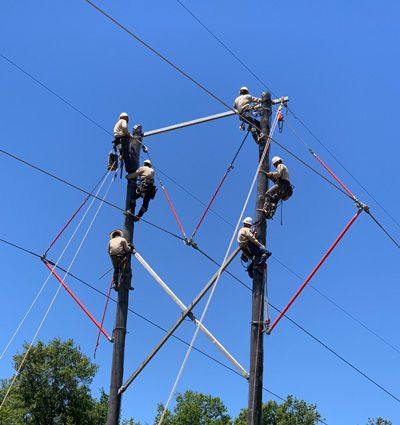Tag: Osha Articles
Testing and Test Facilities
Written by Matt Edmonds, CUSP, CIT, CHST, and Pam Tompkins, CSP, CUSP on . Posted in OSHA Articles.
Electrical Protective Equipment and Live-Line Tools
Written by Matt Edmonds, CUSP, CIT, CHST, and Pam Tompkins, CSP, CUSP on . Posted in OSHA Articles.
OSHA Electric Power Standards – Simplified
Written by Matt Edmonds, CUSP, CIT, CHST, and Pam Tompkins, CSP, CUSP on . Posted in OSHA Articles.
Mechanical Equipment Rules for Qualified Workers
Written by Matt Edmonds, CUSP, CIT, CHST, and Pam Tompkins, CSP, CUSP on . Posted in OSHA Articles.
OSHA Electric Power Standards – Simplified
Written by Matt Edmonds, CUSP, CIT, CHST, and Pam Tompkins, CSP, CUSP on . Posted in OSHA Articles.
OSHA Electric Power Standards – Simplified
Written by Matt Edmonds, CUSP, CIT, CHST, and Pam Tompkins, CSP, CUSP on . Posted in Worksite Safety, OSHA Articles.
OSHA Electric Power Standards – Simplified | Part 6
Written by Matt Edmonds, CUSP, CIT, CHST, and Pam Tompkins, CSP, CUSP on . Posted in Worksite Safety, OSHA Articles.
Information Transfer: What’s Needed to Protect Affected Workers?
Written by Matt Edmonds, CUSP, CIT, CHST, and Pam Tompkins, CSP, CUSP on . Posted in Worksite Safety, OSHA Articles.
Minimum Approach Distances: What’s Required?
Written by Matt Edmonds, CUSP, CIT, CHST, and Pam Tompkins, CSP, CUSP on . Posted in Worksite Safety, OSHA Articles.
Why are Job Briefings and Risk Assessments Important?
Written by Matt Edmonds, CUSP, CIT, CHST, and Pam Tompkins, CSP, CUSP on . Posted in Worksite Safety, OSHA Articles.
What are OSHA’s Training Requirements?
Written by Matt Edmonds, CUSP, CIT, CHST, and Pam Tompkins, CSP, CUSP on . Posted in Worksite Safety, OSHA Articles.
When OSHA Electric Power Safety Standards Apply
Written by Matt Edmonds, CUSP, CIT, CHST, and Pam Tompkins, CSP, CUSP on . Posted in Worksite Safety, OSHA Articles.


